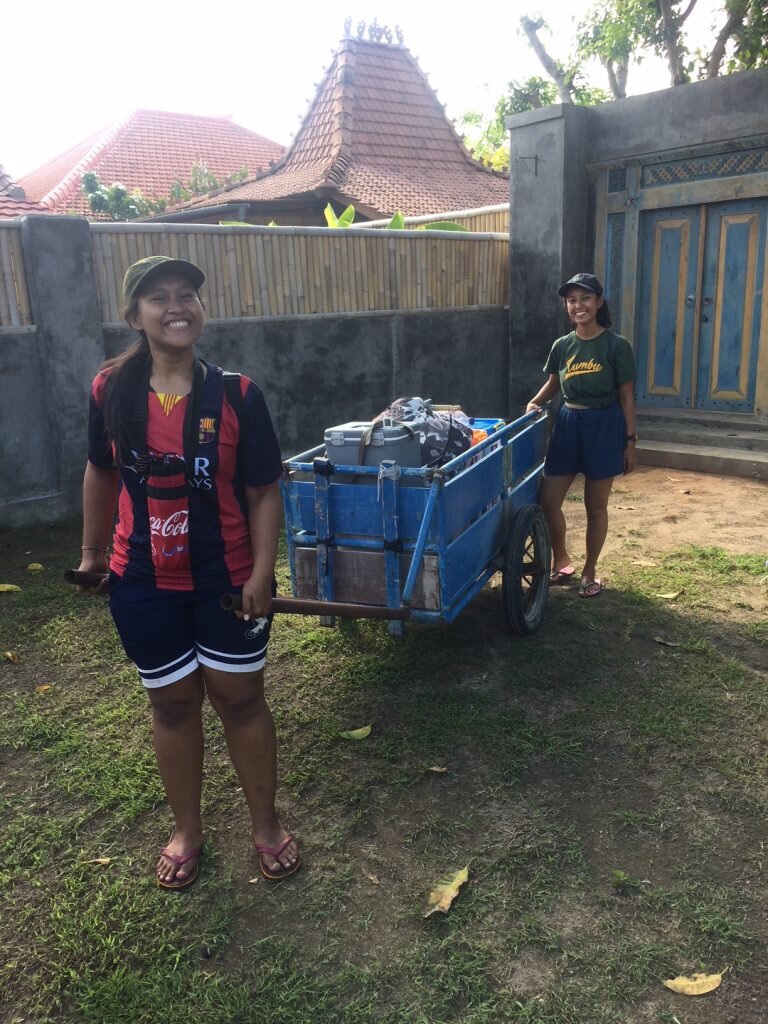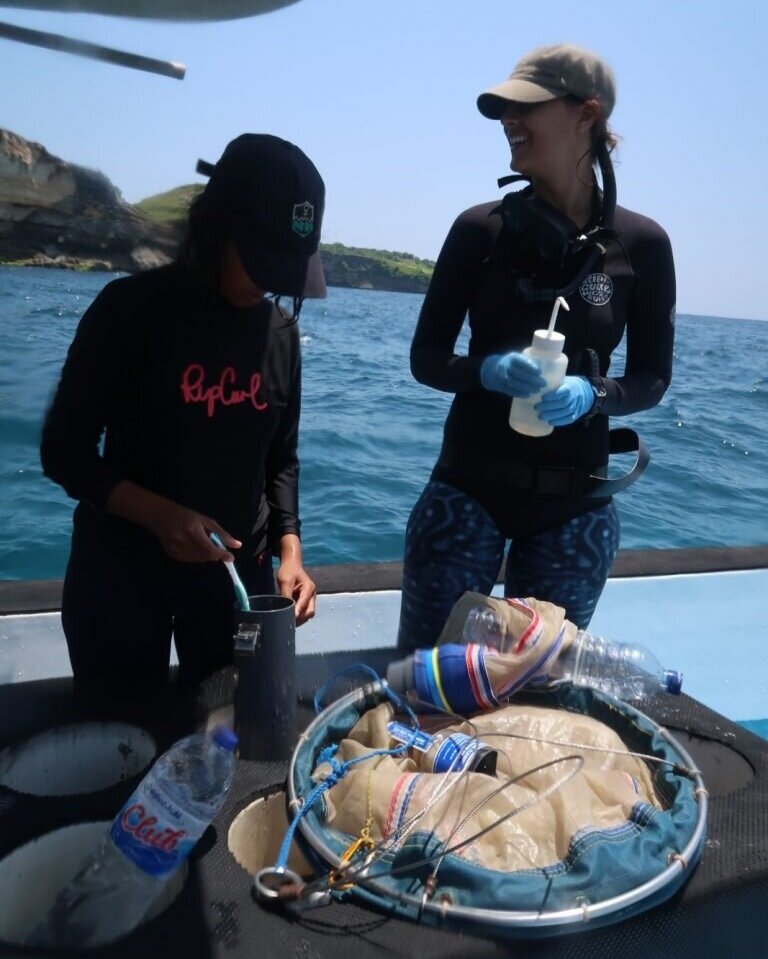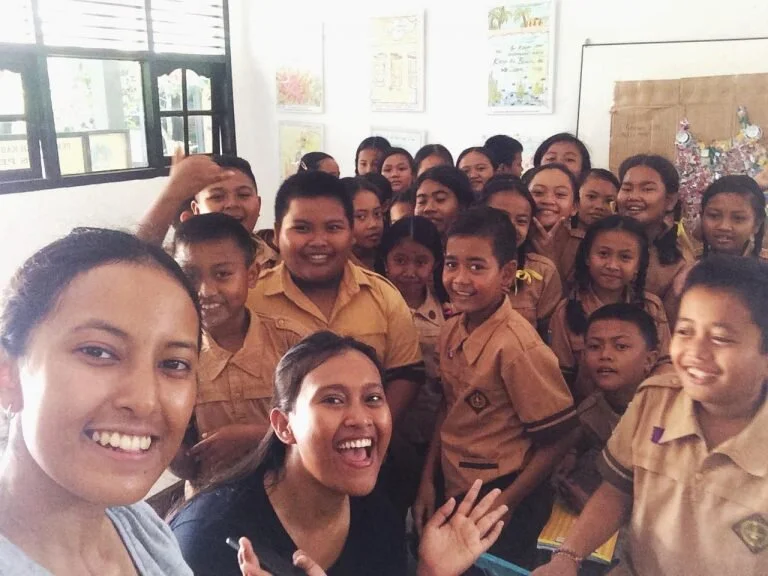Not Just Another Fish in the Sea: Protecting Mantas through Plastic Research
New Years is always exciting! And this year, we started with a splash! In the first week of January 2019, April and I (Janis) went to Nusa Lembongan to conduct my undergraduate thesis field work, and April's field work experience. Both of us joined MMF from Udayana University to support their research project on the microplastics found in and around the manta ray's feeding ground in Nusa Penida. Manta rays are an important asset to the island's tourism industry. As Nusa Islands are a Marine Protected Area (MPA), it's important to learn about the manta rays and the things that are threatening their existence in the area.
Moving research equipment from the house to the lab
Calibrating the equipment
Getting some belly shots
Collecting some trash while we’re in the water!
THE MICROPLASTIC RESEARCH BEGINS...
On day one we began by setting up the lab in the office. The research hasn't been done for a year and all of the research instruments were tucked away in boxes. Setting up the lab and getting the equipment ready took almost a full day. After getting the equipment and the lab all set, we were ready to venture out into field.
Our first day of going out on the water was greeted by the scorching sun and some cool and calm swell. Lucky for us, the mantas were also there to greet us while we were taking some of their food supply for samples. As the days passed, we tried to go out to sea during sunny weather and sailable swells... However, as rough seas go, things weren't always according to plan, so we had to stay in the lab and finish our samples for a week or so.
Processing the samples wasn't as tricky as sampling, however it took quite some time to get the results. We had to look through the plankton samples to see if there were any microplastics present, and then dry the materials. Afterwards, we then identify the microplastics’ characteristics based on how they look.
Practicing our freediving skills
One of the sunny/rainy days
Getting ready for a plankton/microplastic net deployment
Processing the samples on the boat (it was harder than it looks!)
Counting, sizing and categorizing the types of plastic
Looking through the planktons for buried microplastics
MANTA MATCHING AS WE GO
As well as processing the samples, we also did some “Manta Matching” (www.mantamatcher.org), which is a technique of comparing manta belly patterns to a database of known manta bellies that have been spotted in the area. Since we met quite a lot of mantas during the other sampling days, we had lots of photos to add to the database! It was interesting to learn that mantas - like humans - also have unique ID patterns, and that it could be useful to gather as much information as we can on these graceful ocean 'pancakes'. After a week or so of being out of the sea, we jumped in at last. The last few sampling days were sort of rough, as the swell wouldn't get any calmer... But we did it anyway! We finally finished getting our microplastic samples and some nice manta belly shots for us to ID.
A sample manta belly to ID
OUR MICROPLASTIC MASTERPIECE
I will be doing some laboratory analysis using spectroscopy to study the chemical makeup of the microplastics we found for undergraduate thesis as part of my Bachelor of Science studies. So we had to choose some microplastics from the hundreds of samples Ellie has accumulated from previous years. Going through the microplastics was pretty tricky and took patience – we had to be careful not to break the samples or lose them. Using a microscopic camera, we took pictures of the microplastics based on their similar characteristics. The pictures ended up looking like some kind of plastic art, which was really, really cool.
Before separating the microplastics based on their similar characteristics
An example of soft and clear microplastic samples
SHARING OUR FINDINGS WITH YOUNG OCEAN ENTHUSIASTS
During the end of our month in Nusa Lembongan, we visited SDN 2 Lembongan to host a workshop about the ocean’s ecosystem and plastic pollution. We were both very excited because the students were also very enthusiastic about finding out about microplastic pollution. At the end of the day, the students made some manta artwork out of microplastic. It looked great!!! On our last night, we did a small presentation at The Yoga Shack about our MMF experience. We were pleased that the presentation went well with enthusiastic applause, and we got to practice our English presentation skills in front of a small but super interactive crowd! We ended the night having dinner with some people that we knew, and of course with the MMF team.
Coming to Nusa Lembongan and learning with MMF, April had a very interesting and eye-opening experience. She not only learned about manta ecology and microplastics, but also about research and project management. And I did too – not only did I get to learn more about manta ecology and microplastics, but I also learned about expanding ideas and visions for my future research paper. It really helped me understand my undergraduate thesis so much better. Being able to work and learn together with the MMF team, and living on the beautiful Nusa Lembongan Island has been something we are both very fond of. We can't wait to get back to the island and do some more manta and microplastics work!
Selfie with the 5th and 6th graders of SDN 2 Lembongan
Our manta art result!
Written by Janis Argeswara
Thank you to our supporters, and especially Ocean Park Conservation Foundation Hong Kong, Mantahari Oceancare, Idea Wild, Scuba Junkie Komodo, Flores XP Komodo, Blue Corner Dive, PADI Foundation and Foundation Fortuna, Rich Horner and Ibu Jane for making this field work possible!

















